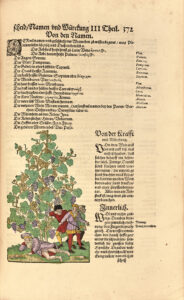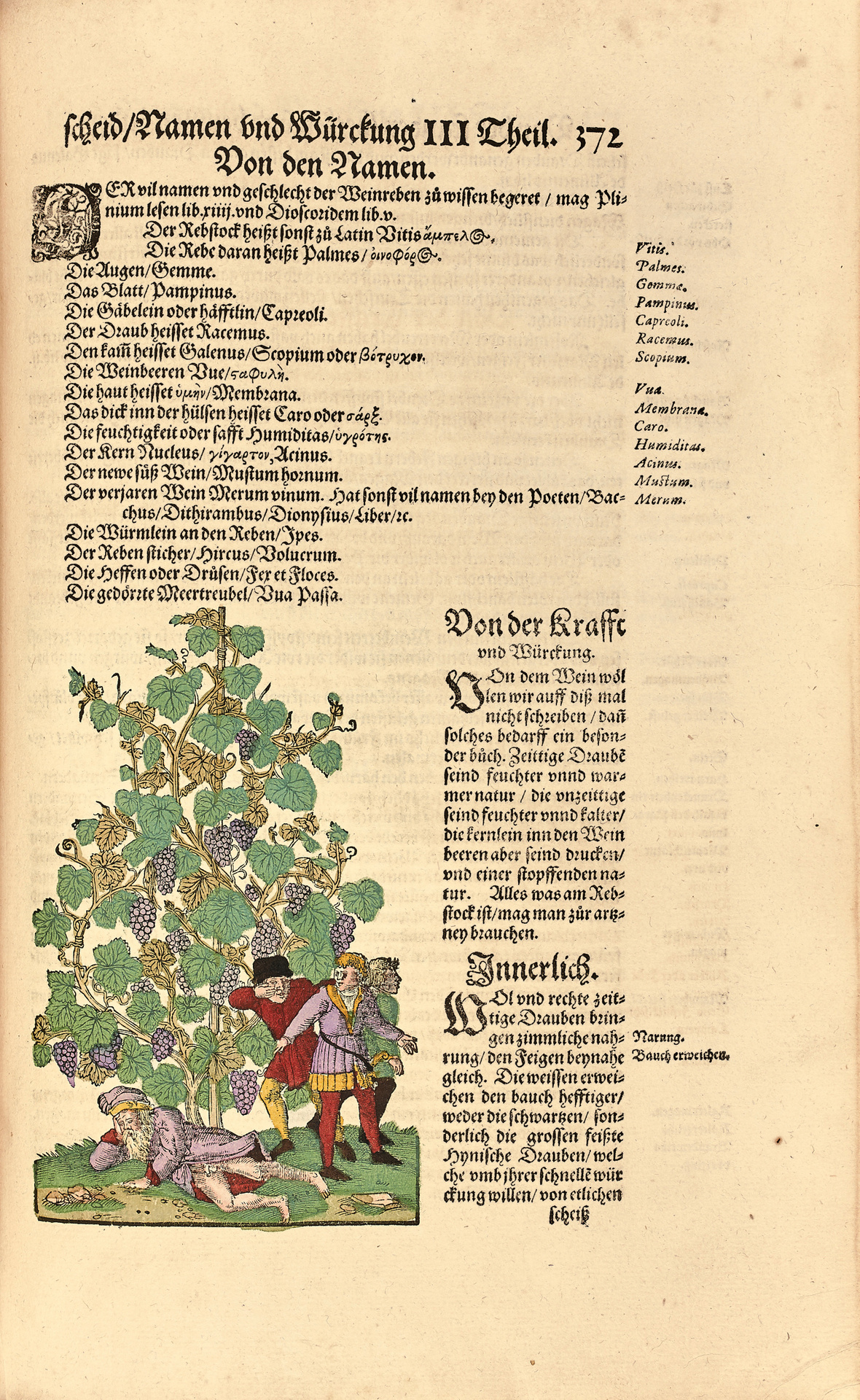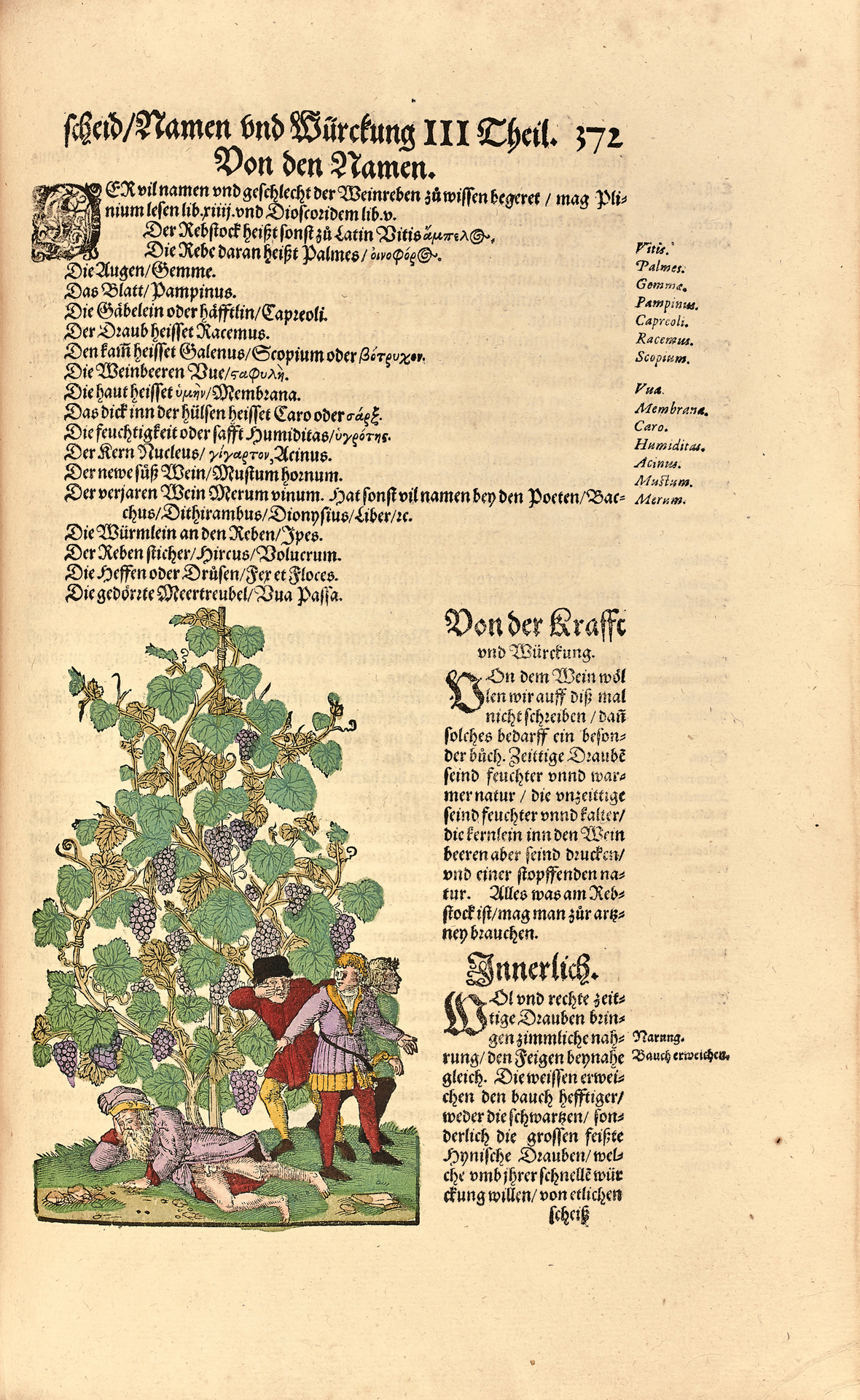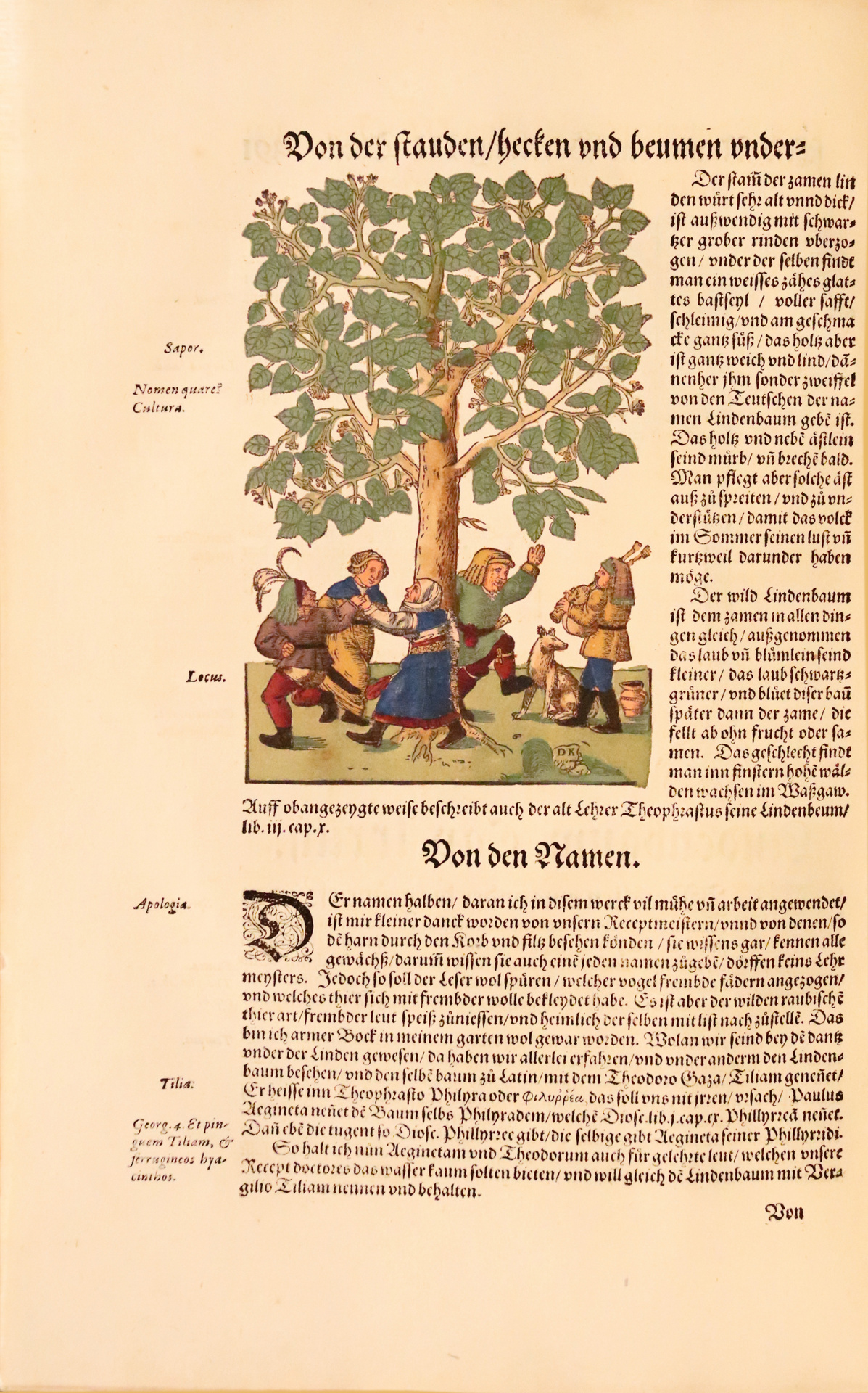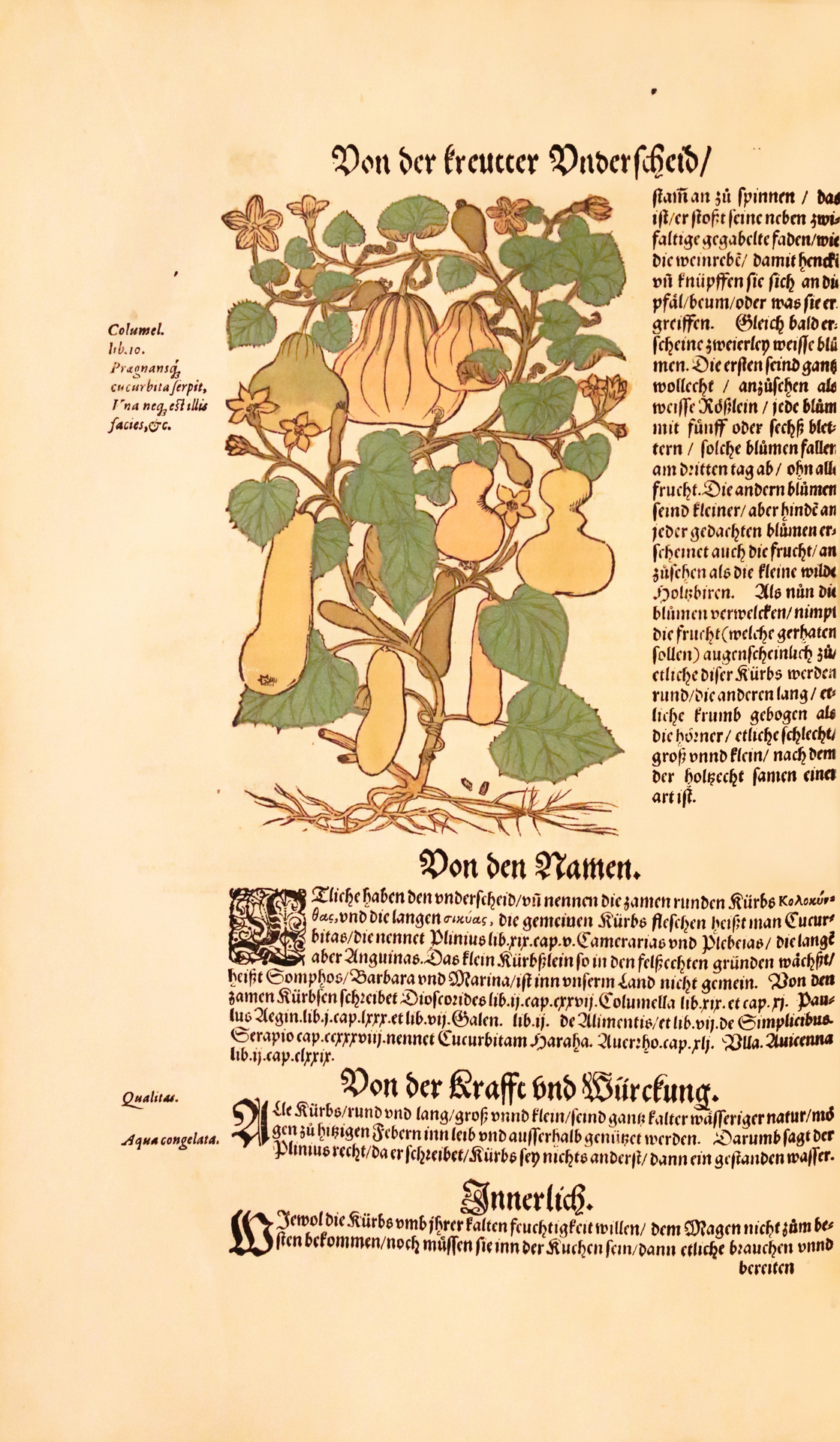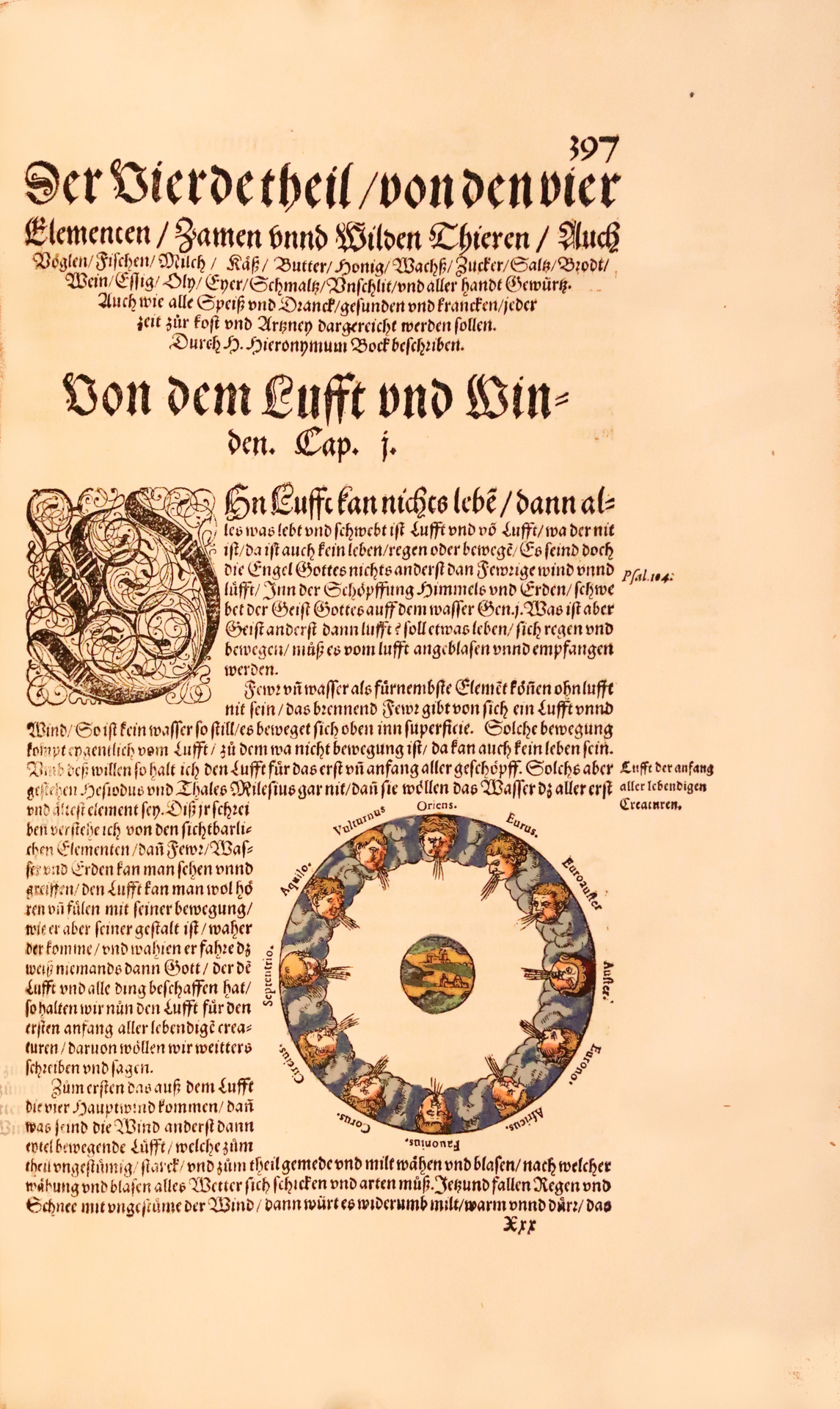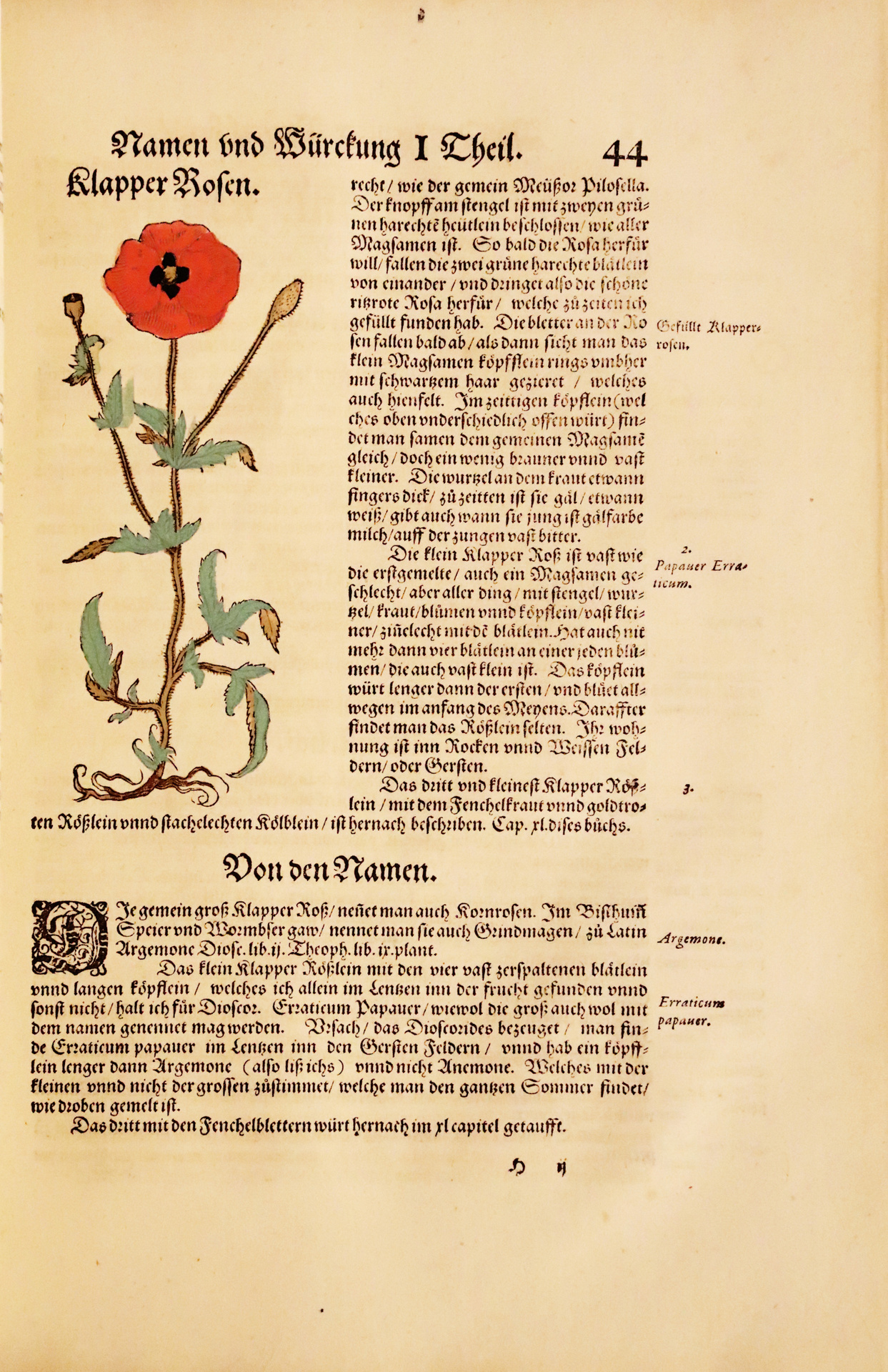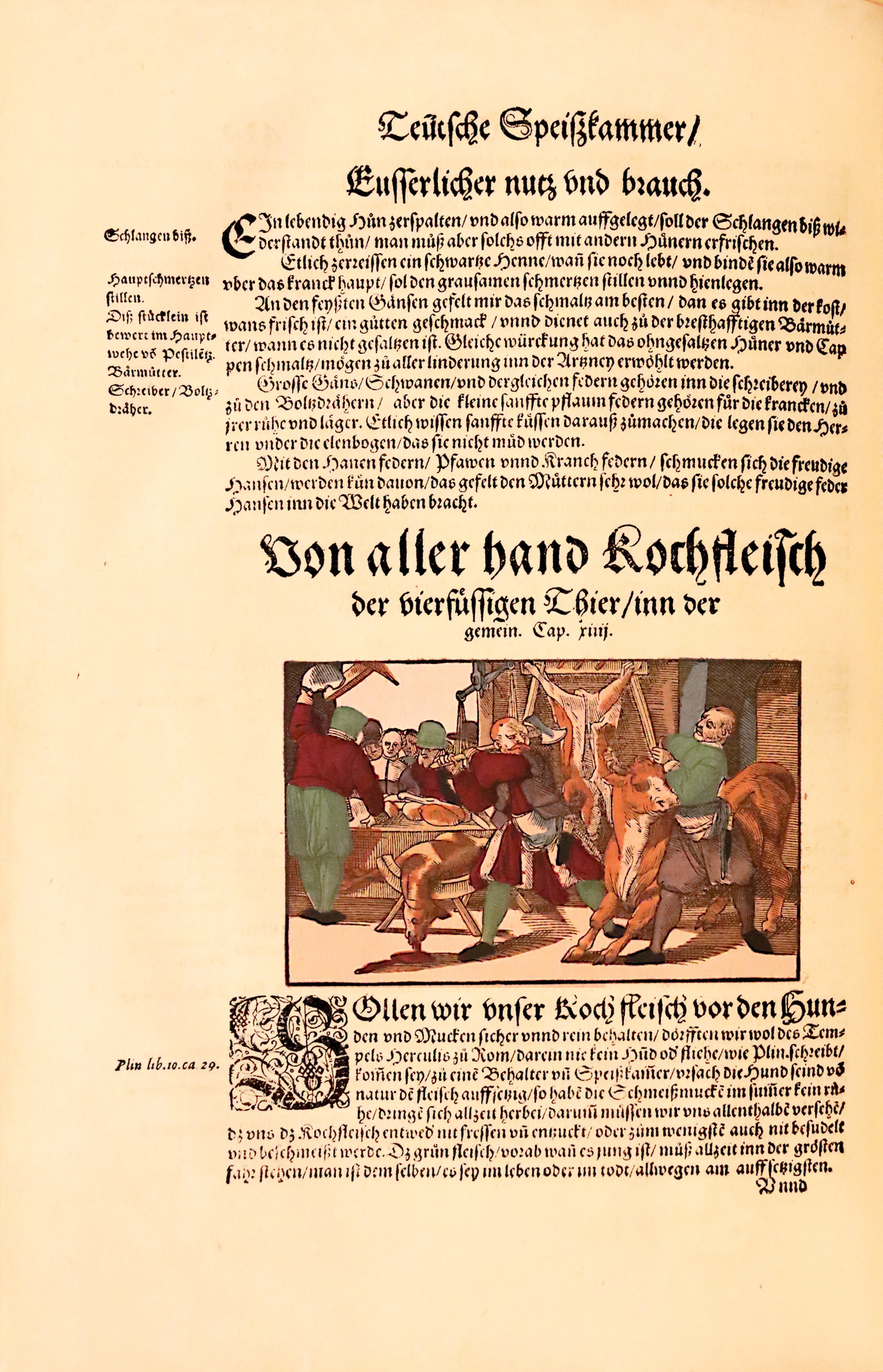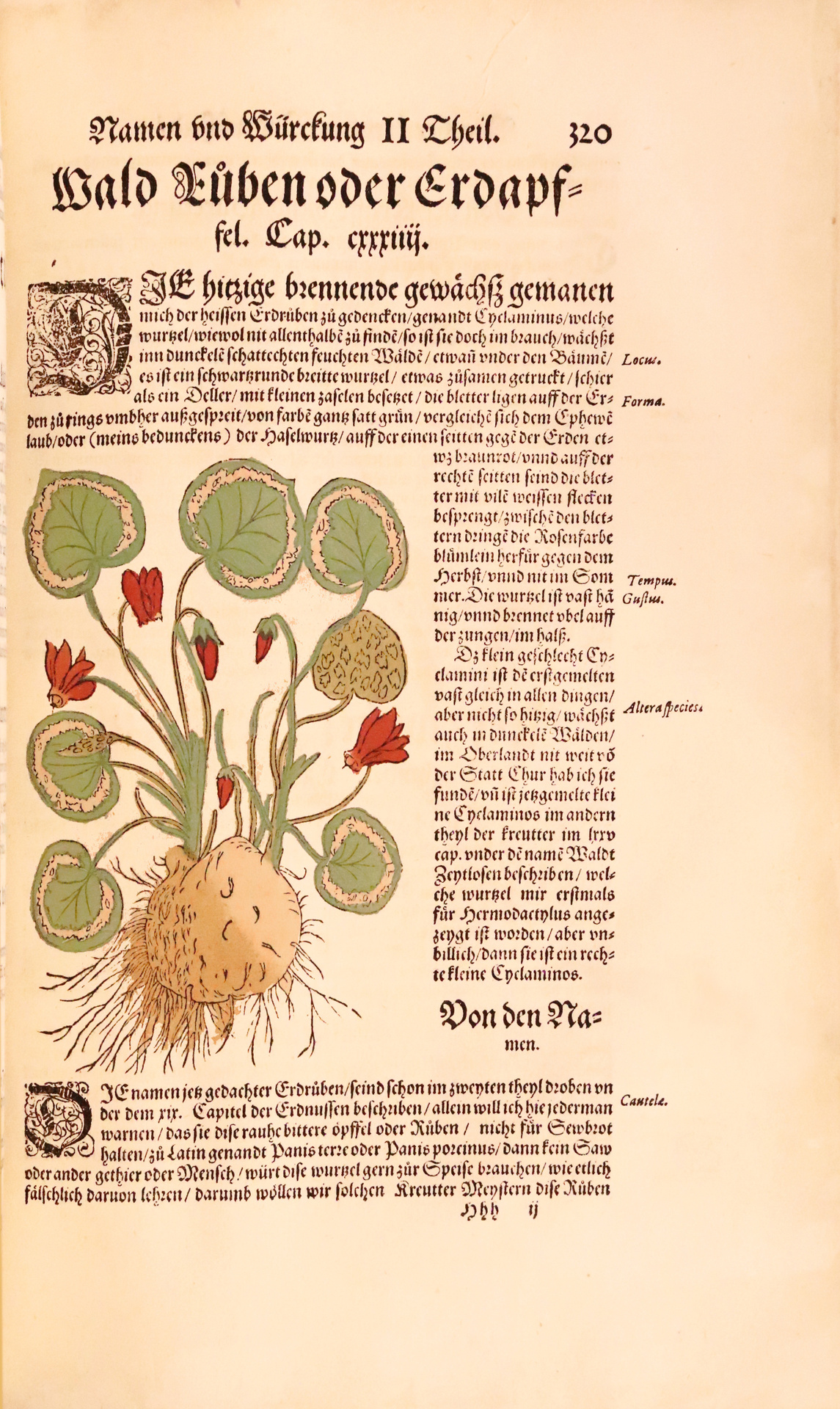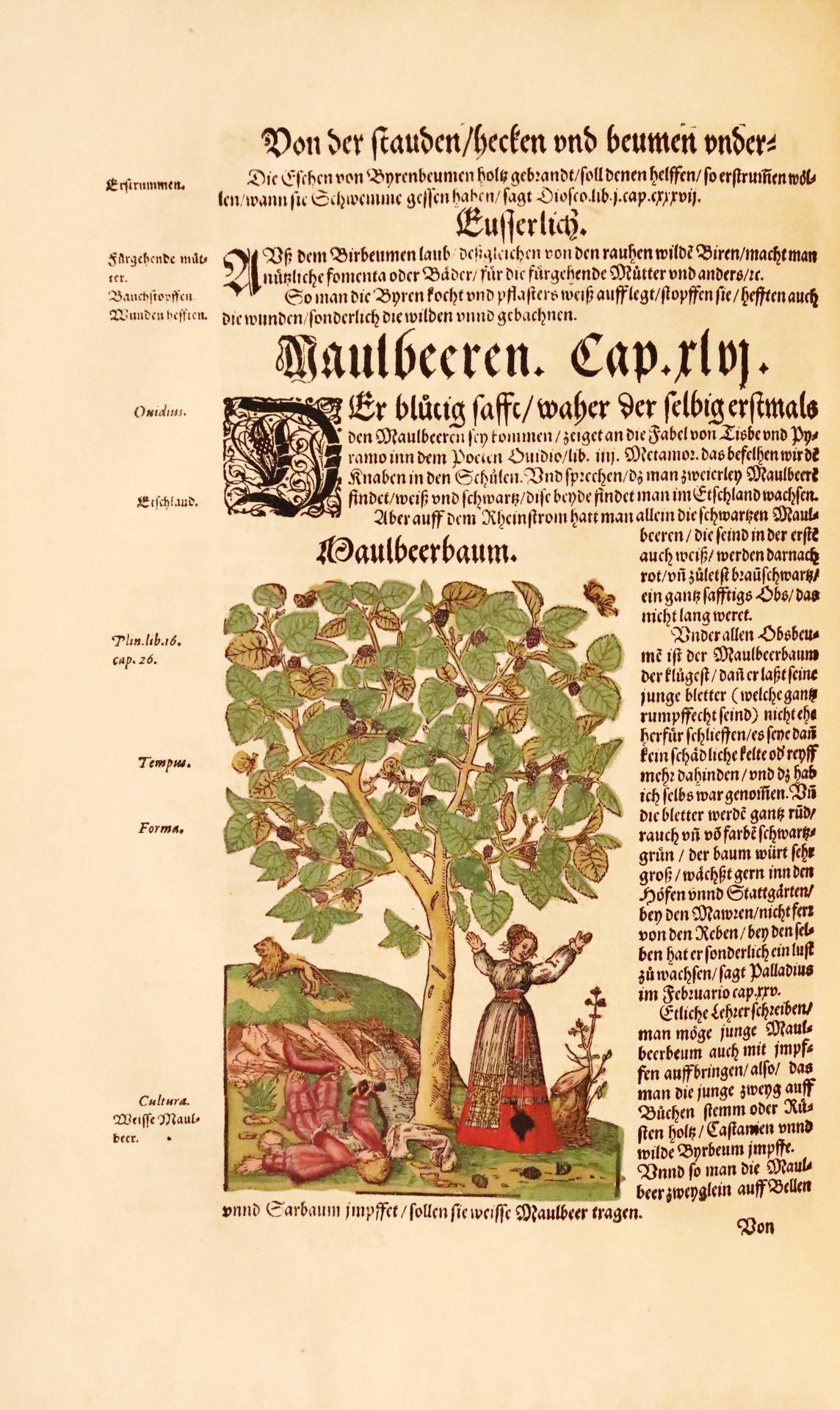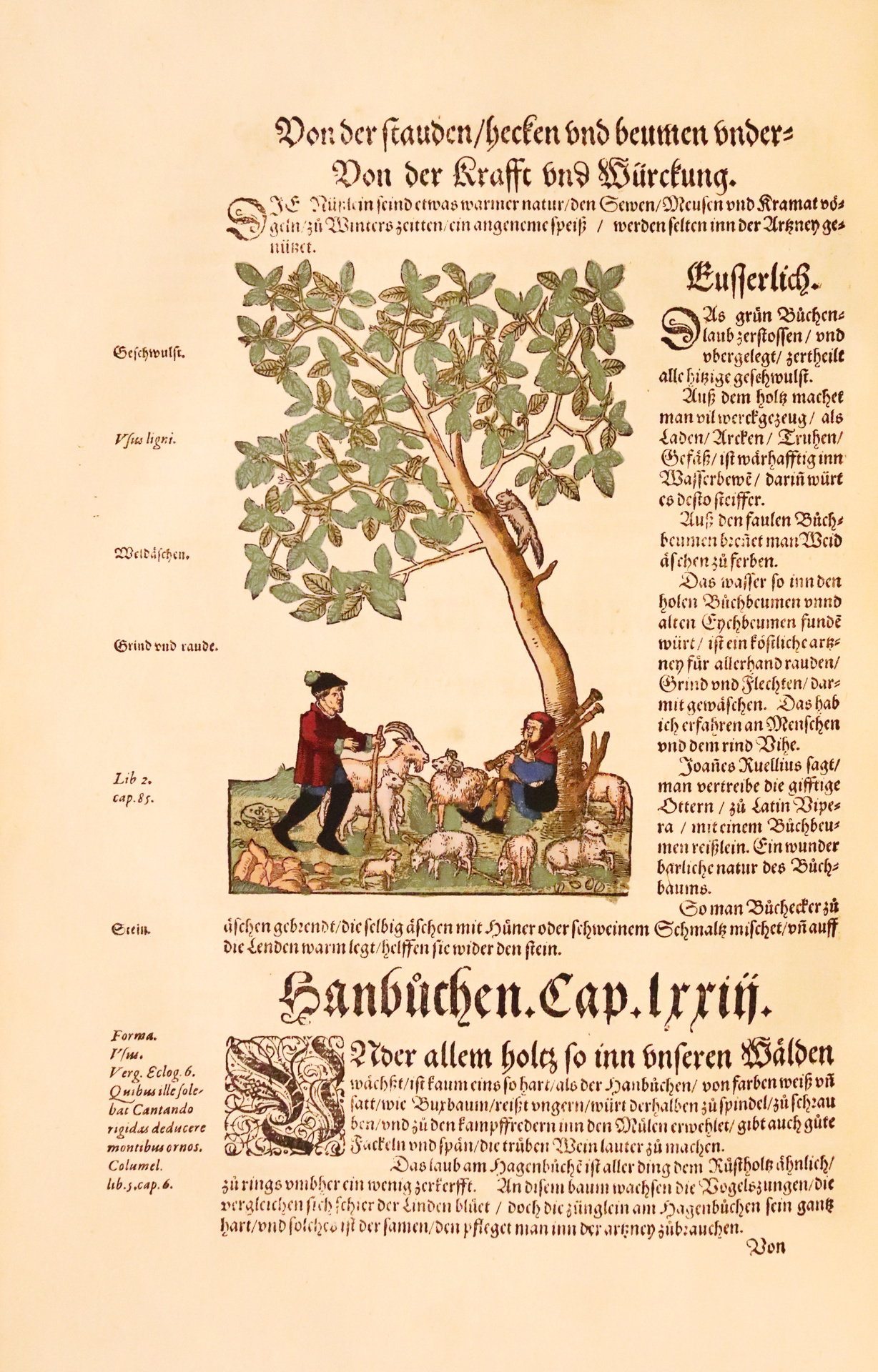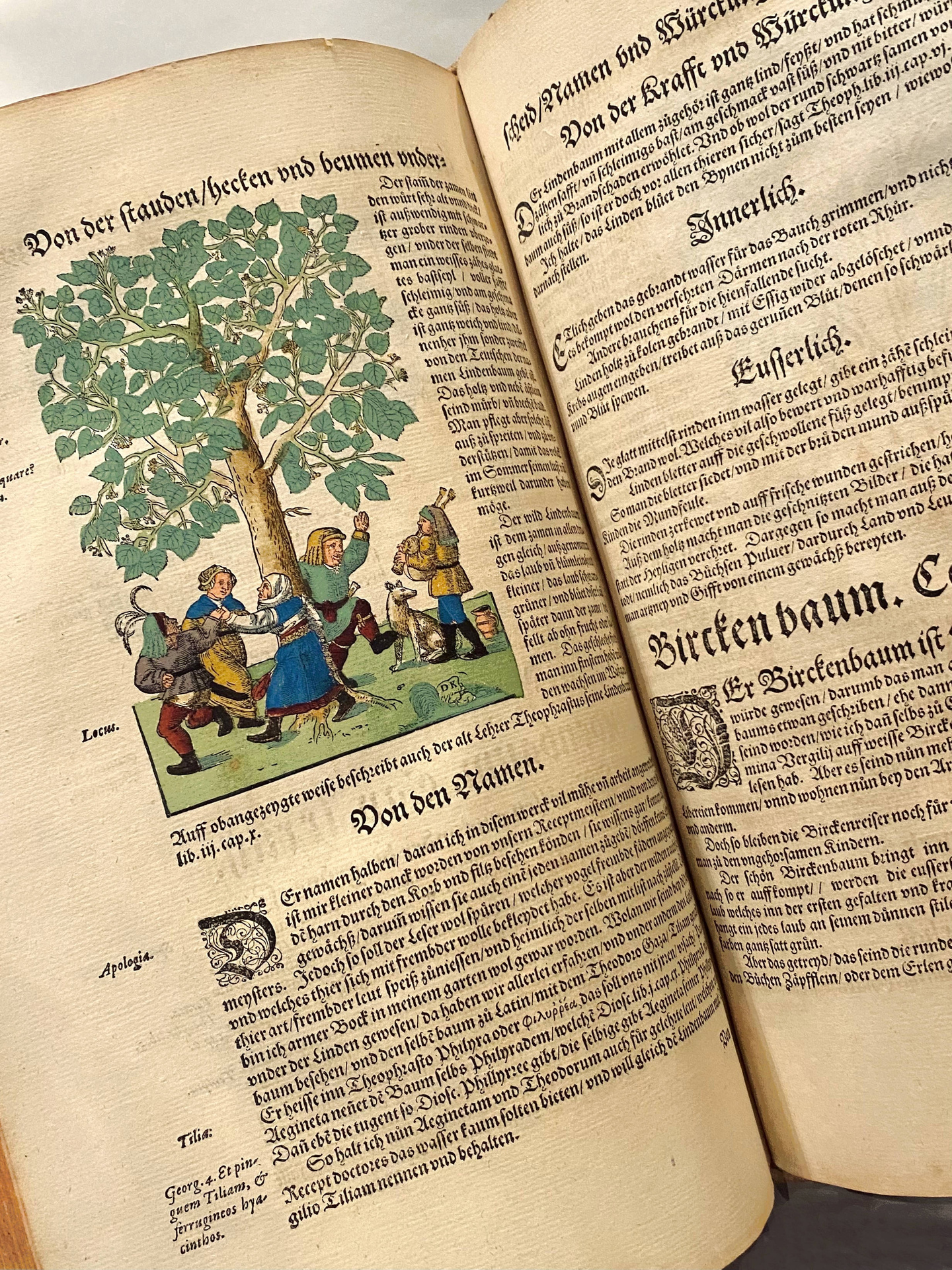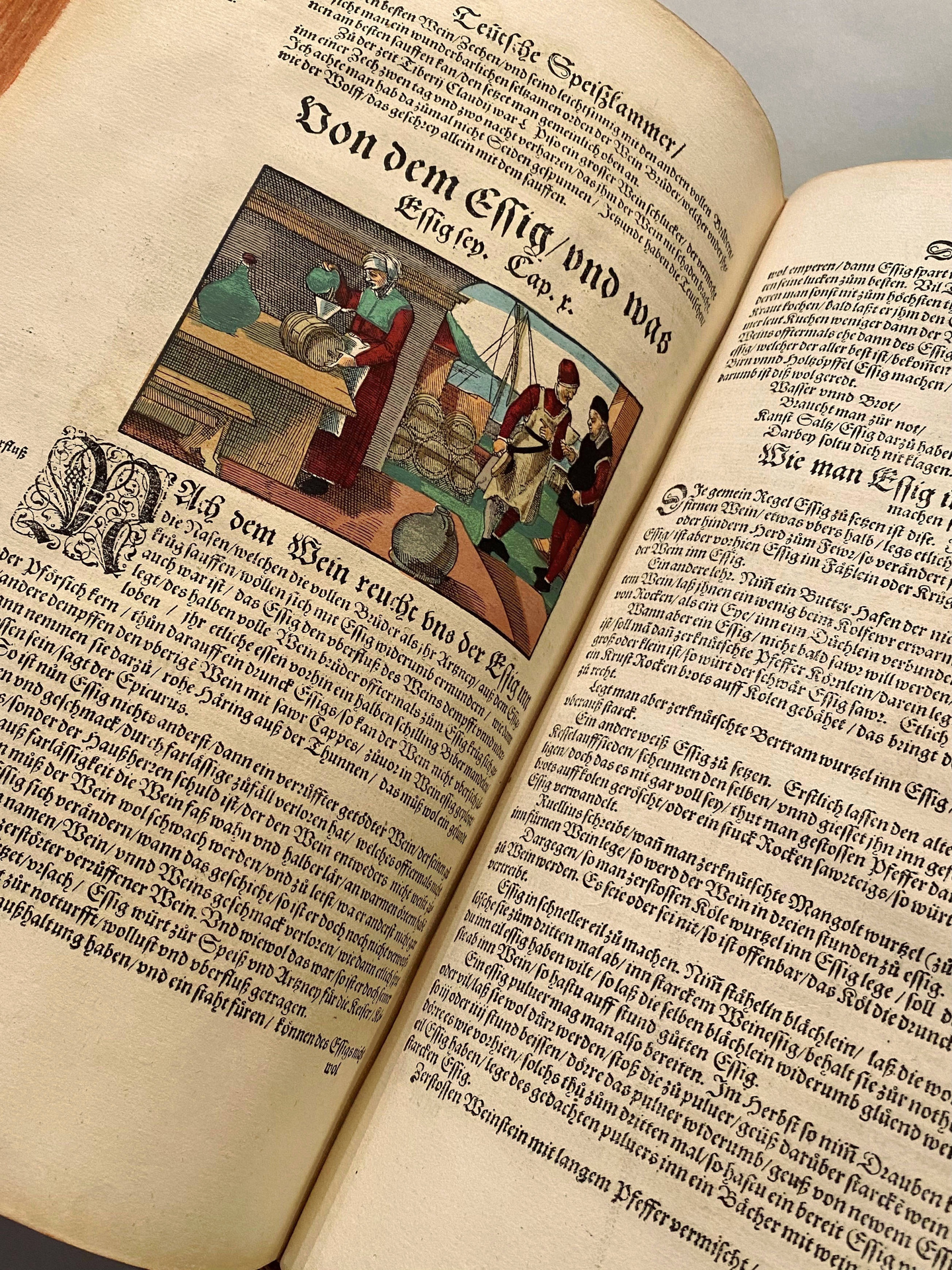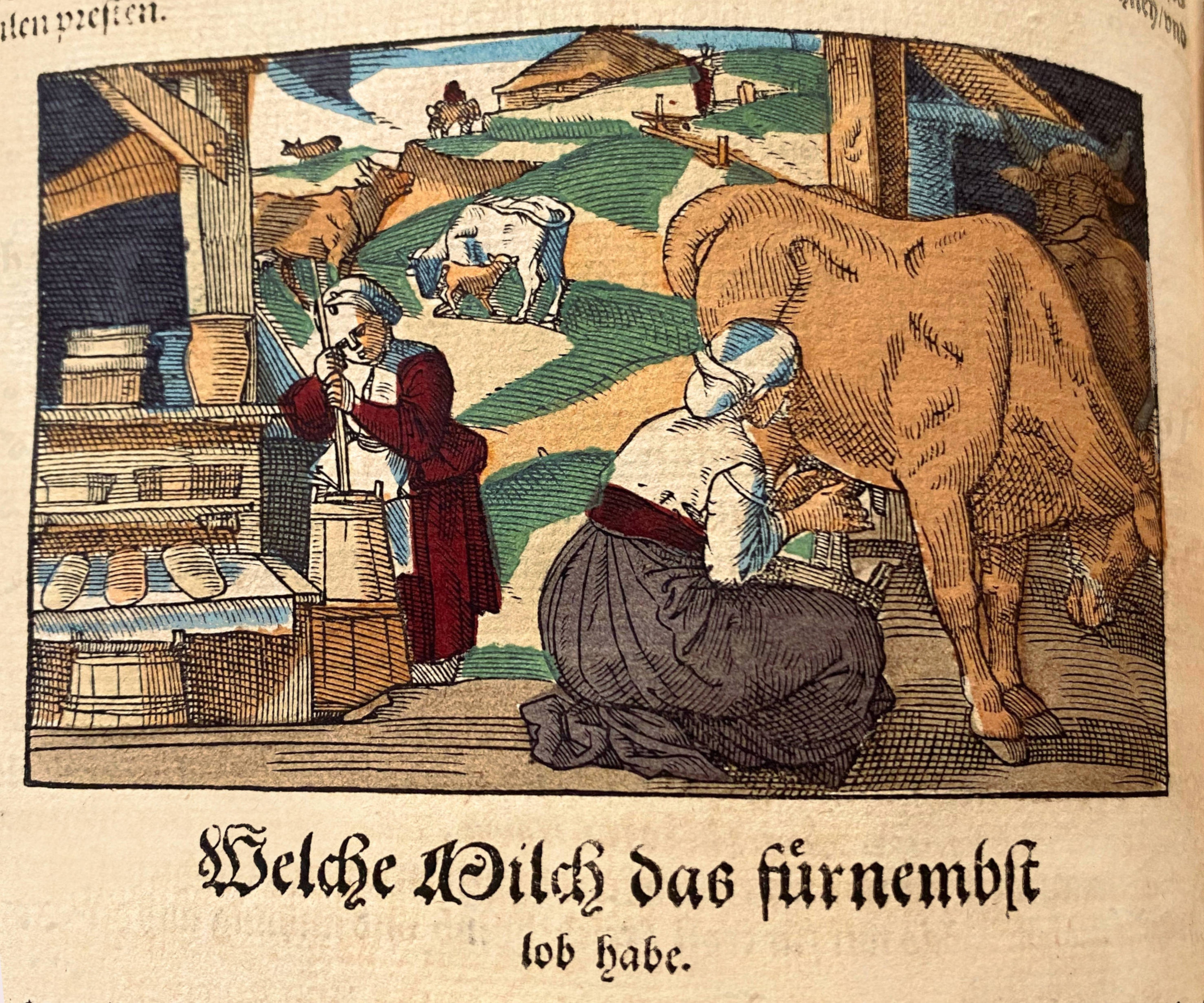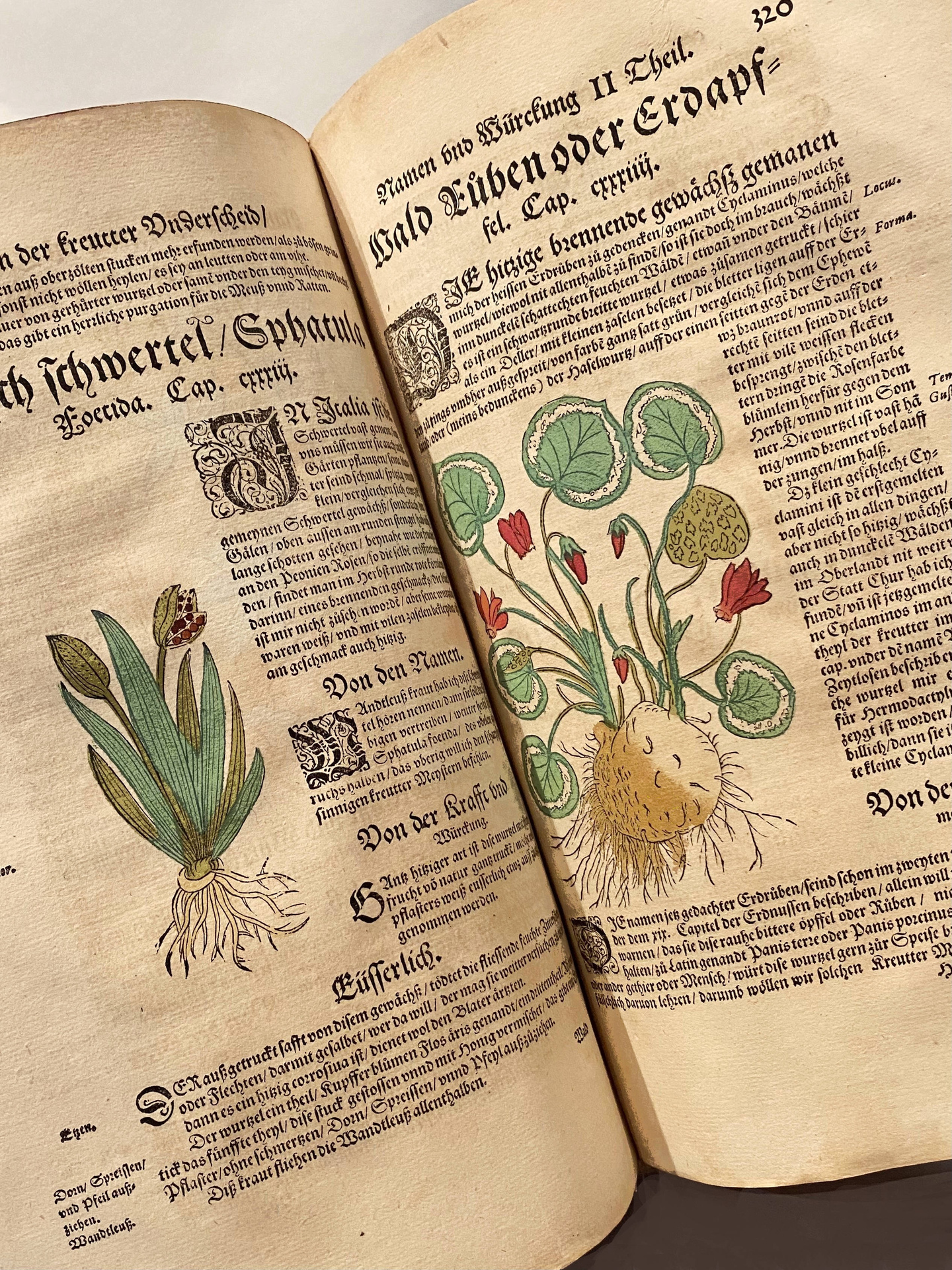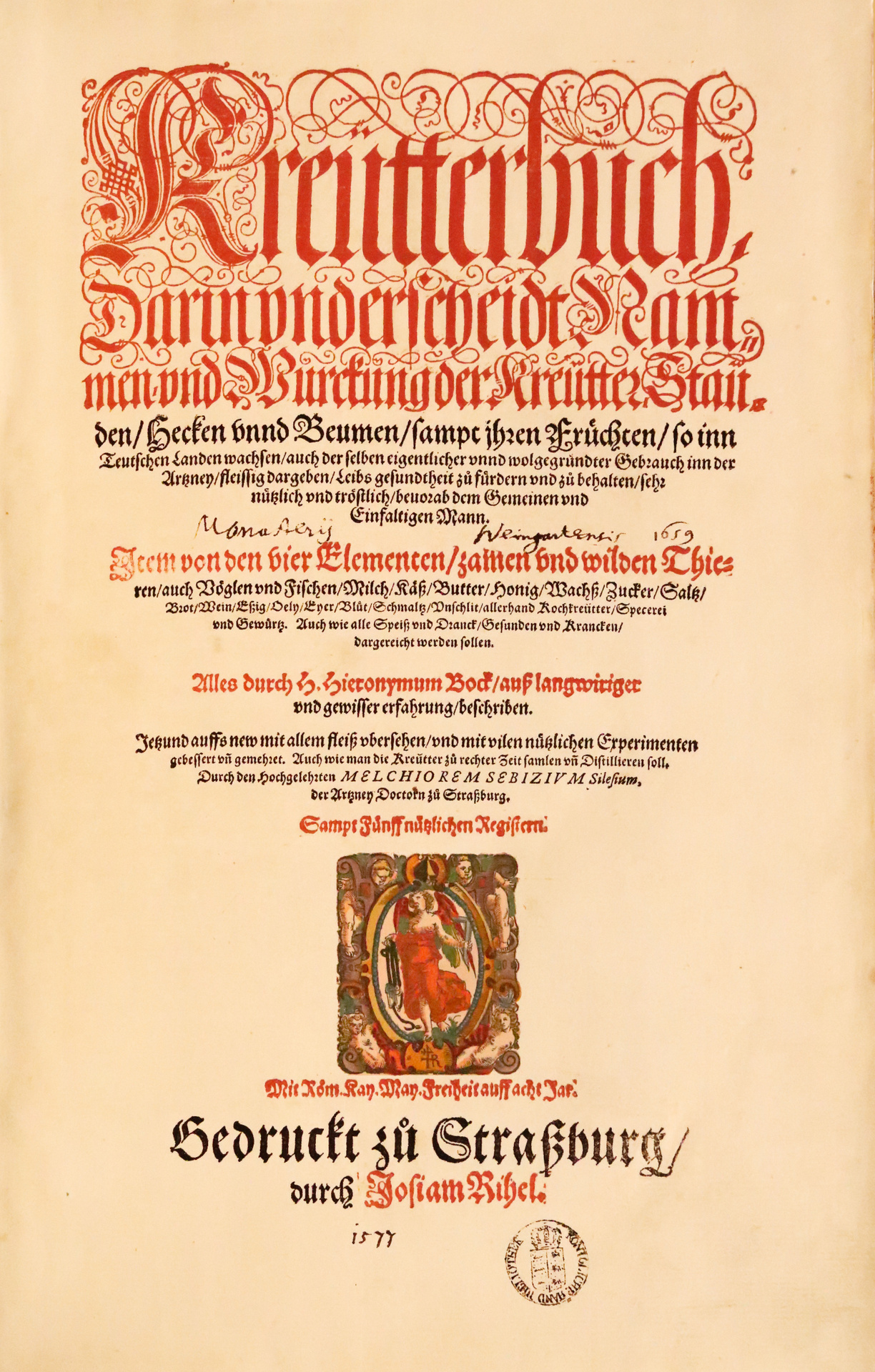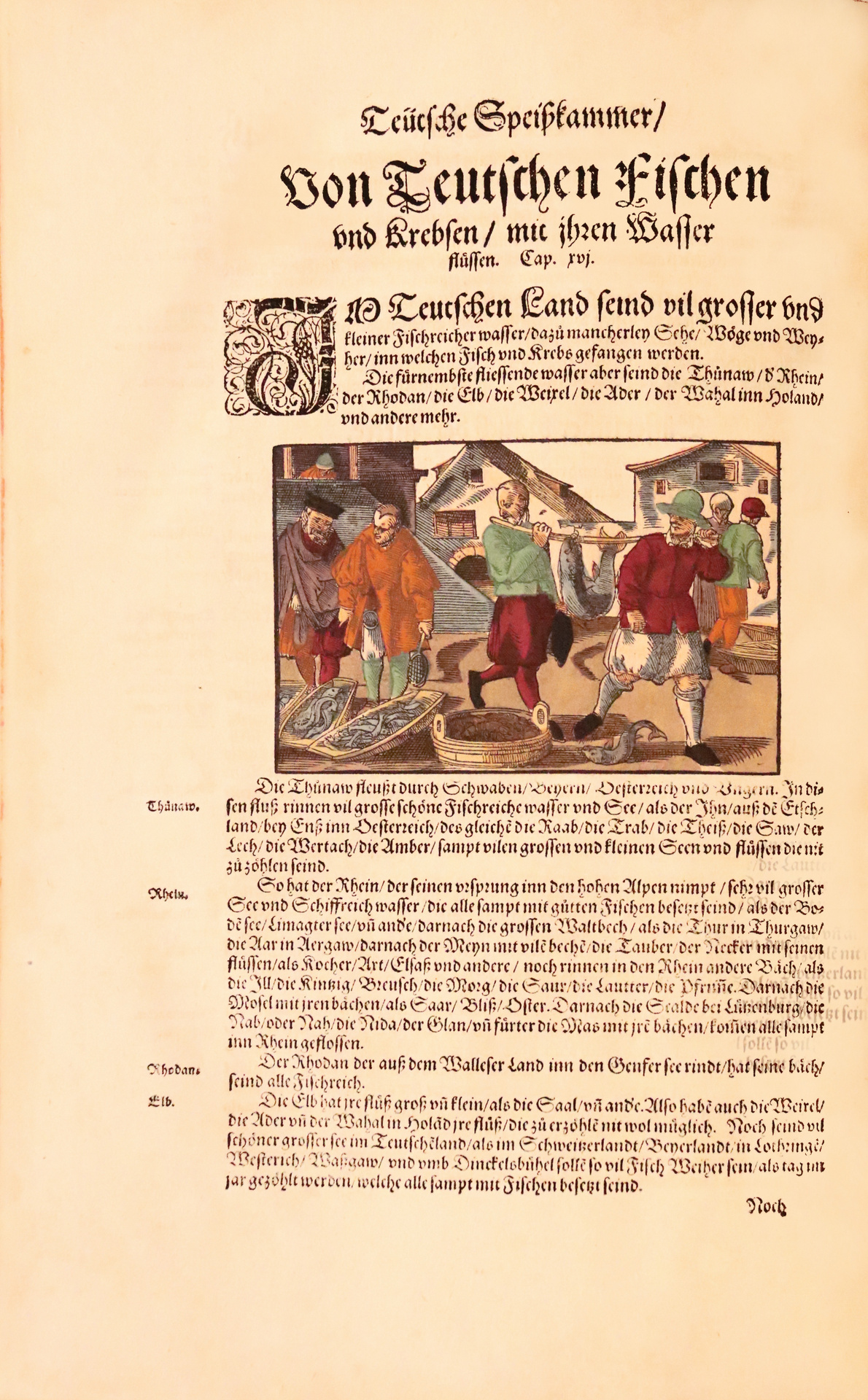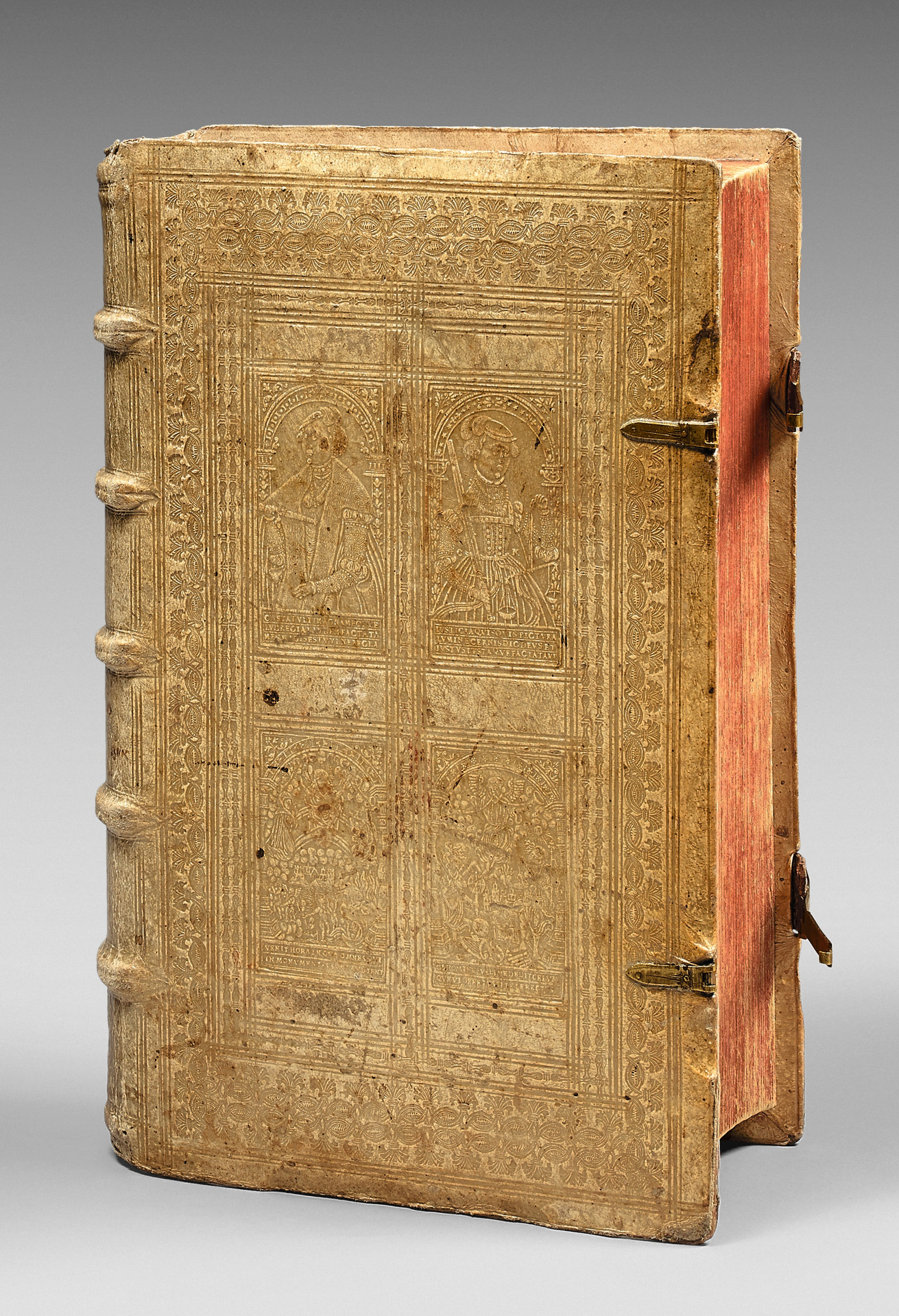Strasbourg, Josias Rihel, n.d. [1577].
Large folio [335 x 216 mm] of (30) ll., 450 ll., (24) ll. the last one blank, old handwritten note in the margin of a l., small tear previously restored on l. 448.
Pigskin over wooden boards, covers with beveled edges and decorated with a beautiful blind-stamped decor composed of two borders and four compartments with captioned figures, metallic clasps, spine ribbed and decorated with blind-stamped panels, red edges. Contemporary binding: Kaspar Kraft in Wittemberg.
First illustrated edition of the culinary treatise of Hieronymus Bock (1498-1554) the father of German botany and sumptuous herbarium illustrated with 590 woodcuts in contemporary colors.
Green, Landmarks of Botanical History I, 1983, pp. 304-359. – Blunt & Raphael, The Illustrated Herbal, 1979, pp. 129-132. – Nissen, BBI, n° 182.- Muller, Bibliographie strasbourgeoise III, 1986, p. 523, n° 177.- Index Aureliensis IV, 1970, p. 378 : BL, München SB, Roma BV, Wroclaw.
Doctor and botanist, H. Bock (1498-1554) is, like Brunfels and Fuchs, one of the three “Fathers of German botany”. The rise of botany in the Renaissance is characterized by an entirely renewed iconography, since the image had to allow not only the understanding of the descriptive text, but also the identification of the plant for therapeutic purposes.
Bock is a leader among the revivers of botany in the 16th century.
His studies on plants resulted from live observations, on the spot, during his frequent excursions in the Ardennes, Vosges, Jura, Swiss Alps and the borders of the Rhine.
Commentator of ancient texts and pioneer of direct observation, the intendant of Zweibrücken’s botanical garden collected a large number of specimens, specifying the origin of the plants, the conditions of their botanization as well as their medicinal properties.
“Bock is the second Germanic founder of Botany… His descriptions of flowers were remarkably intelligible… he took into consideration some elements that his predecessors completely ignored. He established the corolla, stamens and pistils as essential components of many flowers and he’s probably the first botanist from the 16th century who understood the necessity of a classification.” Hunt.
“It was him first who introduced a certain method in botany that we couldn’t find nor in Brunfel neither in Fuchs.” (Jourdan, Biographie médicale.)
« One of the earliest to give original descriptions of plants instead on relying on what Dioscorides or
Pliny had written » (Morton, History of Botanical Science, p. 125).
The text of the Kreütterbuch was published in 1539, without illustration, for lack of financial means. Arber observes that it was somehow a chance that stimulated him, forcing him to carefully describe each plant, so much so that Fuchs, criticized for the indigence of his descriptions, took up some word for word. (Arber, Herbals, 1986, pp. 151-153).
The first illustrated edition (468 woodcuts) dates back to 1546; the iconography was extended to 530 engravings in 1551. The present edition of 1577, given by the doctor Melchior Sebitz the Old, Rector of the University of Strasbourg, integrates for the first time Bock’s culinary manual that had been published separately in 1550 without illustration.
Valued edition, continuously reissued until the 17th century. It has been chosen for the reprint in facsimile (Munich, 1964).
The illustration contains approximately 590 woodcuts, drawn and engraved by David Kandal, contemporary hand-colored.
Mariette praised the talent and precision of David Kandal (1520-1592), a flower painter and engraver. The artist from Strasbourg did not limit himself in interpreting the compositions of Fuchs or Brunfels, he gave a hundreds of his own.
His drawings reproduce plants, from roots to flowers, sometimes accompanied by genre scenes, besides the portrait of the author, in full-page in an architectural framing, and the shield of Philip William, Prince of Orange, also in full-page.
Prestigious copy where the contribution of the coloring, strictly contemporary, is not only meticulous but homogeneous. These engravings, without much shadows, were suitable for coloring.
First illustrated edition of Bock’s culinary treatise.
The Teutsche Speisskammer, illustrated with 19 woodcuts after the drawings of the Swiss painter Tobias Stimmer, contains some one hundred pages where the author reviews food uses: poultry, fish, vegetables and herbs, milk, butter, wines (first mention of Riesling), cheeses (German, Swiss and Dutch), spices (ginger, pepper, cardamom, cloves, saffron), German bread (made with rye or barley), honey and sugar (then considered as medicine).
The scenes engraved in first issue represent the fish market, butcher, banquet, kitchen, pantry, etc. The last section, Von Panckentieren unnd Schlassdruncken is less of a botanist than of a Lutheran pastor that he also was. It deals with banquets, as well as the combined effects of drunkenness and dance, advocating for temperance.
(Weiss, Gastronomia, 1996, n° 427 ; Bitting, Gastronomic Bibliography, 1939, p. 46, as well as Cagle, A Matter of Taste, 1999, n° 85, only mention the 1550 edition).
Sumptuous copy, perfectly preserved, in contemporary blind-stamped pigskin, signed by Kaspar Kraft the Young.
Made in Wittenberg in Kaspar Kraft’s workshop, the binding is decorated with four plates reported by Haebler. Repeated on the lower cover, one of them is signed with the initials CK. They are captioned and depict Lucretia, Justice (two distinct plates) and an allegory of Reason.
(Haebler, Rollen und Plattenstempel des XVI. Jahrhunderts, 1928-1929, part I, p. 218, n° VIII; p. 216, n° II and part II, p. 326, n° VII a-b.)
Provenance:
– handwritten ex-libris in red ink on the inside cover: Niclas Oschenbach Haübttman, 1602; accompanied with an engraving by J.B. Collaert after Jan van der Straet: Mars dans les bras de Vénus, circa 1600 (Hollstein, 93);
– Inscription on the title marking the provenance of the Benedictine Abbey of Weingarten, dated 1659;
– Stuttgart’s Royal Library after the Abbey was secularized in 1803. Ink stamp.
